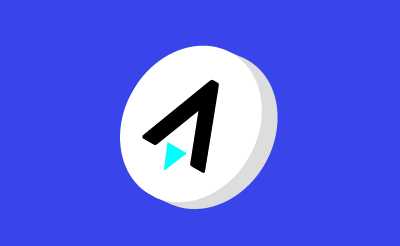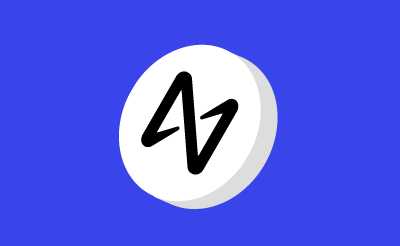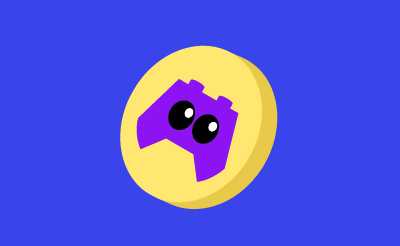Polygon
Previously known as Matic Network, Polygon is a protocol and a framework for building and connecting interconnected blockchain networks.
What is Polygon?
- It is the first well-structured, easy-to-use platform for Ethereum scaling and infrastructure development.
- Polygon provides the core components and tools to join the new, borderless economy and society. Its core component is Polygon SDK, a modular, flexible framework that supports building multiple types of applications.
- Through Polygon, developers can launch preset blockchain networks with attributes tailored to their needs.
- Polygon is designed to be an entire platform created for launching interoperable blockchains, effectively transforming Ethereum into a full-fledged multi-chain system (aka Internet of Blockchains).
- Polygon is centered around the MATIC token, which will continue to exist and will play an increasingly important role in staking, securing the system and enabling governance.
- MATIC, the native token of Polygon, is an ERC-20 token running on the Ethereum blockchain. The tokens are used for payment services on Polygon and as a settlement currency between users who operate within the Polygon ecosystem. The transaction fees on Polygon sidechains are also paid in MATIC tokens.
Key Metrics
| Ticker | MATIC |
| Token Name | Polygon |
| Token Type/Protocol | ERC-20 |
| Total Token Supply | 10,000,000,000 MATIC |
| Current Circulating Supply | See Coinmarketcap |
| Market Capitalisation | See Coinmarketcap |
| Token Creation Date | October 2017 |
| Can it be mined? | No |
Who is behind Polygon?
Polygon was co-founded by Jaynti Kanani, Sandeep Nailwal and Anurag Arjun, two experienced blockchain developers and a business consultant. The Polygon team was a huge contributor in the Ethereum ecosystem. The team worked on implementing the Plasma MVP, the WalletConnect protocol and the widely-used Dagger event notification engine on Ethereum.
What is the purpose of Polygon?
The project focuses on reducing the complexity of scalability and instant blockchain transactions using a customized version of the Plasma framework which is built on proof-of-stake
checkpoints that run through the Ethereum main-chain.
Insights:
- It seeks to address some of Ethereum’s major limitations—including its throughput, poor user experience (high speed and delayed transactions), and lack of community governance—using a novel sidechain solution.
- Developers can create optimistic rollup chains, ZK rollup chains, stand alone chains or any other kind of infrastructure required by the developers themselves allowing a growing range of modules so that developers are able to create sovereign blockchains with more specific functionality.
- Polygon’s interoperable blockchains multi-chain system is similar to other ones such as Polkadot, Cosmos, Avalanche etc. with the advantages of Ethereum’s security, vibrant ecosystem and openness.
- The Plasma Framework and the proof-of-stake blockchain architecture are well combined and used by Polygon. The Plasma framework, as proposed by the co-founder of Ethereum, Vitalik Buterin, allows for the easy execution of scalable and autonomous smart contracts.
- Polygon boasts of up to 65,000 transactions per second on a single side chain, along with a respectable block confirmation time of less than two seconds. The framework also allows for the creation of globally available decentralized financial applications on a single foundational blockchain.
Risks
- Even Though Polygon has low transaction fees, and allows holders to scale offers staking rewards, its Market Cap as well as total value locked ratio is high causing the possibility of assets to be overvalued.
- Polygon provides Matic Plasma and Matic POS Chains as its two scaling solutions. Other than that, Polygon Framework is available through SDK which provides developers enough documentation to get started. Other scaling solutions like ZK Rollups, Optimistic Rollups, Validum Chains, Sidechains, Enterprise Chains are under development.
- It is Ethereum dependent since Ethereum is the epicenter of the ecosystem as the settlement layer.
- Matic plasma chains are not versatile and can be used for limited options. POS Chains are more widely used because it provides flexibility and great user experience as compared to Matic Plasma.
News and Updates
- Polygon is self-described as a Layer 2 scaling solution, which means that the project doesn’t seek to upgrade its current basic blockchain layer any time soon. The project focuses on reducing the complexity of scalability and instant blockchain transactions.
- While Polygon currently supports only Ethereum basechain, the network intends to extend support for additional basechains, based on community suggestions and consensus. This would make Polygon an interoperable decentralized Layer 2 blockchain platform.
- Polygon has planned to form a DAO, a decentralized autonomous organization which spreads governance responsibilities across a distributed network rather than in the hands of a centralized authority to encourage DeFi interoperability and adoption.
- When compared to other L2 scaling solutions, Polygon has not been able to fare that well. Now, even though the network’s revenue has increased by 60.92% week-over-week, the latest engagement and monetization numbers do not seem to be very appealing.
Community & Whitepaper Links:
- Official Website: https://polygon.technology
- White Paper: https://polygon.technology/papers/
Disclaimer
All investments are speculative and involve substantial risk and uncertainty. Investors should understand the nature of digital assets including the terms of return and the risk of assets. We encourage investors to fully understand the assets and the risk associated with them prior to making any investment.



